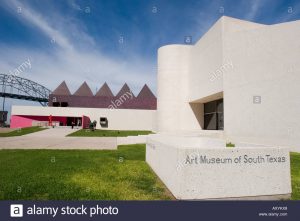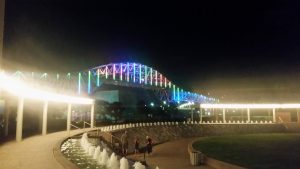Finding your love for your hometown is something that you gently fall into. When you’re there, its easy to hate it — you can see up close the flaws and shortcomings that you learn to live with. It seems often that things will not change. That every weekend, there will be nothing to do, that the construction will never end yet the roads will never be fixed. My hometown, Corpus Christi, is precisely like this. And yet, after taking a walk in San Antonio’s historic West Side, I began to reflect on the historical architecture present in Corpus, and it is in this reflection that I realized how little I knew. Thus, I began to dig a bit deeper into the architectural monuments I so easily took for granted.
Heritage Park
Just as the name would suggest, Heritage Park showcases twelve Corpus Christi homes of historical significance, dating all the way back to 1851 (The Merriman‐Bobys House). Between them, one can see architecture ranging from Victorian to Colonial, speaking to the diversity not only of the structures themselves, but the long-gone inhabitants that are a testament to the diversity of the Bay Area. Members of the NAACP, co-founders of LULAC, Mexican-Americans, Irish-Americans, African-Americans… the whole array can be seen represented in Heritage Park, not for the superficial reason of ‘inclusion’, but because the original owners of these homes made their mark in the coastal bend community.
What pains me about Heritage Park is that very little work has been done in terms of bringing this fascinating history to the public. A quick search for ‘Heritage Park’ reveals that the historic site has no website, no social media — hardly a trace! It is only within the last few days that I learned the park itself was used for anything other than special events. Sure, most Corpus Christians know of the historical site, but of its history? What a tragedy! Most of the online reviews are about the types of pokemon you can find there on Pokemon Go! All this to say, taking this Public History course has allowed me to appreciate Heritage Park much more, and additionally it has allowed me to realize how desperately it is in need of a good public historian.
The Art Museum of South Texas
Any art museum houses hundreds of individual pieces of breathtaking art. But can the building itself be called art? Only naturally. At the Art Museum of South Texas much care has been put into the architecture of the two buildings — one from 1972, one from 2006. The original building, crafted by Philip Johnson is a love letter to the region, constructed of shells, sand, and concrete (a.k.a. shellcrete) and fashioned into a castle reminiscent of adobe style homes, perfect for keeping the sticky heat and humidity away from the precious pieces within. Much of this I knew, as my mother was once obsessed with the structure of the museum, pulling out her little architecture book and flipping to the page that featured our hometown museum any time it would come up in conversation with our guests.

The Harbor Bridge
Of all the interesting and historic architecture in Corpus, however, there is one thing that stands apart — the iconic Harbor Bridge, and its skeleton-like silhouette. Finished in 1959, it stands at 243 ft. tall. (You can see more specs here. ) But despite its iconic status and sixty years of service, the end is nigh for this beloved Corpus Christi monument. My grandmother would describe how she used to take a ferry boat across the channel that the Harbor Bridge connects, and that the bridge brought that era to an end. Nowadays it seems as though the bridge will now be left in the dust, a plan for a new bridge already being put into action, its completion expected in 2021.

In conclusion, I prompt my readers to think about the architecture of their hometown, wherever that may be. There’s no town too small or city too big not to have key buildings that made an impression on you, whether you hung around them very much or not. Leave a comment telling me where you’re from and which buildings remind you most of your life growing up, or which you consider ‘classic hometown’.
